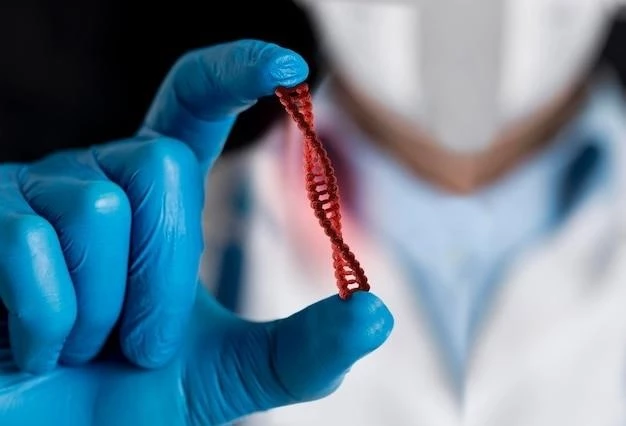Disease ‒ Hereditary Spherocytic Hemolytic Anemia
Hereditary Spherocytic Hemolytic Anemia is a genetic blood disorder characterized by spherical-shaped red blood cells, leading to hemolysis. The condition can result in symptoms such as jaundice, anemia, and fatigue. Diagnosis involves identifying spherocytes and a family history of the disorder. Treatment options include iron therapy and removal of the spleen.
Introduction
Hereditary spherocytic hemolytic anemia is an inherited blood disorder characterized by abnormalities in red blood cells, leading to their premature destruction in the bloodstream. The condition affects individuals at the genetic level, causing the production of spherocytes, which are abnormally round-shaped red blood cells that are more prone to rupture.
Individuals with hereditary spherocytic hemolytic anemia often experience symptoms such as jaundice due to the breakdown of red blood cells, resulting in the release of bilirubin, a yellow pigment. Anemia, caused by the decreased number of functional red blood cells, can lead to fatigue, weakness, and shortness of breath. The spleen plays a vital role in filtering out abnormal red blood cells, but in this disorder, the spleen may work overtime to remove the spherocytes, leading to enlargement and potential complications.
A genetic mutation affecting proteins in the red blood cell membrane is responsible for the formation of spherocytes in hereditary spherocytic hemolytic anemia. The genetic transmission of this disorder follows an autosomal dominant pattern, meaning that only one copy of the mutated gene from a parent is needed to inherit the condition. Understanding the genetic basis of the disease is crucial for diagnosis and potential treatment strategies.
Throughout this article, we will delve into the causes, symptoms, diagnosis, treatment options, complications, and future outlook of hereditary spherocytic hemolytic anemia, shedding light on this complex blood disorder and its impact on affected individuals.
Understanding the Condition
Hereditary spherocytic hemolytic anemia is a blood disorder that primarily affects the structure and function of red blood cells. In individuals with this condition, the red blood cells have a spherical shape instead of the normal biconcave disc shape. These spherical cells, known as spherocytes, are more fragile and prone to premature destruction, a process known as hemolysis.
The spleen plays a significant role in the pathophysiology of hereditary spherocytic hemolytic anemia. Normally, the spleen helps filter out old and defective red blood cells from circulation. However, in individuals with this disorder, the spleen traps and destroys a higher number of spherocytes, leading to its enlargement over time.
The genetic mutation responsible for hereditary spherocytic hemolytic anemia affects proteins involved in maintaining the structure and flexibility of the red blood cell membrane. This genetic alteration compromises the cell’s ability to withstand the normal stresses of circulation and spleen passage, resulting in the formation of spherocytes and their subsequent destruction.
Understanding the underlying mechanisms of spherocyte formation and hemolysis is crucial for unraveling the complexities of this inherited disorder. Research efforts focus on elucidating the precise genetic defects and molecular pathways involved in hereditary spherocytic hemolytic anemia to pave the way for targeted treatment approaches in the future.
Causes and Risk Factors
Hereditary spherocytic hemolytic anemia is primarily caused by genetic mutations affecting proteins in the red blood cell membrane. These mutations lead to the abnormal formation of spherocytes, which are less flexible and more prone to premature destruction. The heredity of this condition follows an autosomal dominant pattern, meaning that a single copy of the mutated gene from one parent is sufficient to inherit the disorder.
Risk factors for developing hereditary spherocytic hemolytic anemia include a family history of the condition, as it is an inherited disorder. Individuals with a parent carrying the mutated gene have a 50% chance of inheriting the disorder. The genetic mutation responsible for this disorder can be passed down from generation to generation٫ increasing the likelihood of its occurrence within families.
While the genetic component plays a central role in the development of hereditary spherocytic hemolytic anemia, certain environmental factors or triggers can exacerbate symptoms. These triggers may include viral infections, certain medications, or exposure to chemicals that can further stress the already fragile red blood cells. It is important for individuals with the genetic predisposition to this condition to be mindful of these factors to prevent potential complications.
Understanding the genetic basis of hereditary spherocytic hemolytic anemia and identifying individuals at risk based on family history are crucial steps in managing the condition effectively. Genetic counseling and testing can aid in assessing the risk of passing on the disorder and guide treatment strategies for affected individuals and their families.
Symptoms and Diagnosis
Hereditary spherocytic hemolytic anemia presents with a range of symptoms due to the destruction of red blood cells and the resulting impact on overall health. Common symptoms include fatigue, weakness, and pallor, which are indicative of anemia caused by a decreased number of functional red blood cells in circulation; Jaundice, characterized by yellowing of the skin and eyes, is often observed due to the release of bilirubin from the breakdown of red blood cells.
Individuals with hereditary spherocytic hemolytic anemia may also experience an enlarged spleen, known as splenomegaly, as the spleen works overtime to remove the abnormal spherocytes from circulation. This enlargement can lead to abdominal discomfort or fullness. In severe cases, the increased destruction of red blood cells may result in gallstones due to the accumulation of bilirubin in the gallbladder.
Diagnosing hereditary spherocytic hemolytic anemia involves a combination of clinical evaluation, blood tests, and genetic analysis. Blood tests may reveal anemia, an increased number of reticulocytes (young red blood cells), and the presence of spherocytes on a blood smear. A family history of the disorder is also essential in determining the likelihood of an inherited blood disorder.
Genetic testing can confirm the presence of mutations associated with hereditary spherocytic hemolytic anemia, providing a definitive diagnosis for affected individuals. Understanding the symptoms and diagnostic criteria for this condition is crucial for early intervention and the implementation of appropriate treatment strategies to manage the disorder effectively.
Treatment Options
Managing hereditary spherocytic hemolytic anemia focuses on alleviating symptoms, preventing complications, and improving overall quality of life for affected individuals. Treatment strategies may involve a multidisciplinary approach to address the various aspects of the disorder.
One common treatment option for patients with hereditary spherocytic hemolytic anemia is iron therapy to address anemia related to red blood cell destruction. Iron supplementation can help support the production of new red blood cells and improve hemoglobin levels, thereby reducing fatigue and weakness associated with anemia.
In cases where the enlarged spleen is causing significant complications or if the anemia is severe and does not respond well to conservative measures, splenectomy may be considered. Splenectomy involves surgical removal of the spleen, which can reduce the excessive destruction of red blood cells and alleviate symptoms such as fatigue and jaundice.
Monitoring and managing gallbladder health is also important in individuals with hereditary spherocytic hemolytic anemia, as the increased breakdown of red blood cells can lead to the formation of gallstones. Gallbladder symptoms should be promptly evaluated to prevent potential complications such as biliary colic or cholecystitis.
Regular follow-up appointments with healthcare providers are essential to assess the response to treatment, monitor blood counts, and address any emerging symptoms or concerns. Collaborating with specialists such as hematologists, genetic counselors, and gastroenterologists can help tailor treatment plans to the individual needs of patients with hereditary spherocytic hemolytic anemia.
Complications and Management
Hereditary spherocytic hemolytic anemia can lead to various complications that require careful management to improve the quality of life for affected individuals. Common complications include an increased risk of gallbladder problems, such as gallstones, due to the excessive breakdown of red blood cells and the release of bilirubin.
Individuals with hereditary spherocytic hemolytic anemia are also at risk of developing splenomegaly, where the enlarged spleen may cause abdominal discomfort or lead to more severe complications such as splenic sequestration or hypersplenism. Monitoring spleen size and function is essential in managing these potential risks.
Iron overload can be a concern in patients with hereditary spherocytic hemolytic anemia who require frequent blood transfusions or iron supplementation. Excess iron deposition in organs such as the liver and heart can lead to organ damage over time. Regular monitoring of iron levels and appropriate management strategies are crucial to prevent complications related to iron overload.
Managing complications associated with hereditary spherocytic hemolytic anemia requires a comprehensive approach that may involve a combination of treatments targeted at specific symptoms and risks. Close coordination between healthcare providers, including hematologists, gastroenterologists, and genetic counselors, can help optimize care and improve outcomes for individuals with this inherited blood disorder.
Educating patients and their families about potential complications and the importance of proactive management strategies is key in minimizing the impact of hereditary spherocytic hemolytic anemia on daily life. By addressing complications early and implementing appropriate interventions, individuals with this condition can better manage their health and well-being over the long term.
Future Research and Outlook
Research into hereditary spherocytic hemolytic anemia continues to advance our understanding of the underlying genetic mechanisms and potential treatment options for this inherited blood disorder. Future studies aim to uncover novel targets for therapy and improve outcomes for individuals affected by the condition.
Advancements in genetic technology have enabled researchers to identify specific gene mutations associated with hereditary spherocytic hemolytic anemia, paving the way for personalized treatment approaches tailored to the individual genetic profile of patients. Targeted therapies that address the root cause of the disorder hold promise for more effective management strategies;

Exploring the role of immunomodulatory therapies and gene editing techniques in hereditary spherocytic hemolytic anemia could offer new avenues for intervention. Immunomodulatory treatments may help regulate immune responses that contribute to red blood cell destruction, while gene editing technologies hold the potential to correct genetic mutations responsible for the condition.
Further research into the long-term outcomes of splenectomy in individuals with hereditary spherocytic hemolytic anemia is essential to evaluate the risks and benefits of this surgical intervention. Studying the impact of splenectomy on anemia, spleen function, and overall quality of life can inform treatment decisions and optimize patient care.
As research in the field of hereditary spherocytic hemolytic anemia progresses, the future outlook for individuals living with this condition appears promising. By translating scientific discoveries into innovative therapies and personalized interventions, researchers aim to improve the quality of life and prognosis for patients affected by this genetic blood disorder.
